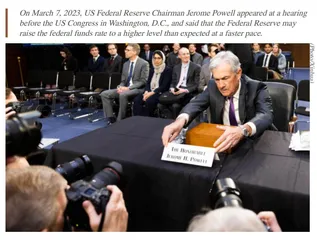Sovereign Debt Management in Developing Countries
作者: Zhou Yuyuan

The sovereign debt issue of developing countries stands out in global governance and international development cooperation. Due to the COVID-19 pandemic, Ukraine crisis and interest rate hikes in developed economies, among other factors, the most broad-based increase in debt experienced by developing countries since 2008, is turning into the fourth round of debt crisis. About 15% of low-income countries are already in debt crisis, 45% are at high risk of debt distress, and 25% of emerging markets face risks akin to debt default. Four countries have applied to restructure their debt with the G20 Common Framework for Debt Treatments beyond the DSSI (Debt Service Suspension Initiative for Poorest Countries, DSSI), or Common Framework in short, and seven countries are on the brink of default. More countries are seeking financial assistance from the International Monetary Fund (IMF) or looking for alternative sources of financing. Some Western powers have adopted irresponsible financial policies, and become notably more reluctant to assume their international obligations and provide global public goods. The politicization of debt issue has aggravated divisions, and the deficit in global governance.
Political factors Behind the Sovereign Debt Issue of Developing Countries
The sovereign debt issue and its management have everything to do with the international political landscape. Since the birth of the Bretton Woods system, finance has always been used by Western powers to seek hegemony and exert influence on developing countries. The rise of emerging markets, China in particular, is driving profound changes in the global financial system. One of the implications is the increasingly diversified sources of foreign debt for developing countries, which has made it more difficult to coordinate debt relief and management. Rapid response becomes harder when a sovereign debt crisis occurs, so does the prevention of new crises.
First, fragmented debt relief efforts as a result of diversified sources of debt. Despite being the largest creditors of developing countries, private creditors hardly participate in collective debt relief. Multilateral financial institutions, while dominating collective debt management, often opt out of debt relief in consideration of their credit ratings. Official bilateral creditors are cautious about whether and how to take part in debt relief, due to political, economic and financial factors at home. Differences also exist between their governments and financial institutions.
Second, the coordination of debt relief efforts. Compared with the top-down approach often adopted in multilateral or collective debt relief, bilateral bailouts are often bottom-up. In other words, creditors and debtors need to reach bilateral consensus first before a bailout is possible. When the sovereign debt relief is led by multilateral financial institutions, they often seek to push through collective consensus, and require official bilateral creditors to follow it through. Bilateral creditors, on the other hand, expect multilateral institutions to provide greater financial and liquidity support. In fact, even the top-down collective relief approach varies markedly in practice, due to the different national conditions of debtor countries.
Thirdly, the compatibility among debt management approaches. The Paris Club used to dominate debt relief for developing countries, but its relevance in sovereign debt treatment is in decline as the share of official loans from Western countries has dropped. In contrast, emerging economies including China are becoming major sources of bilateral loans for developing countries. In the case of China, it has developed its own principles for sovereign debt treatment, including greater emphasis on sustainable development and the reluctance to write down loans directly. In the meantime, debtor nations have begun to explore a third way of debt management, including setting up groups of borrowers corresponding to groups of creditors. Private creditors have also adopted more sophisticated means of debt treatment based on contracts or collective action clauses. There is a need indeed to integrate those debt treatment efforts.
Implications of the Sovereign Debt Politicization
Due to geopolitical competition and major country rivalry, the debt issue, which should be on the development agenda, has been politicized. As several developing nations are mired in debt crisis, some countries have launched the “Blame China” campaign to hurl groundless accusations at China, by framing the debt trap theory and exaggerating issues such as invisible debt and transparency. In disregard of the fact that debt restructuring negotiations are time-consuming and difficult, they are blaming China for the slow progress. Debt politicization is taking a great toll on international debt management, as it has formed a wrong perception of the debt issue, held back the establishment of mechanisms and norms in debt cooperation, and exacerbated the collective action dilemma in debt relief.